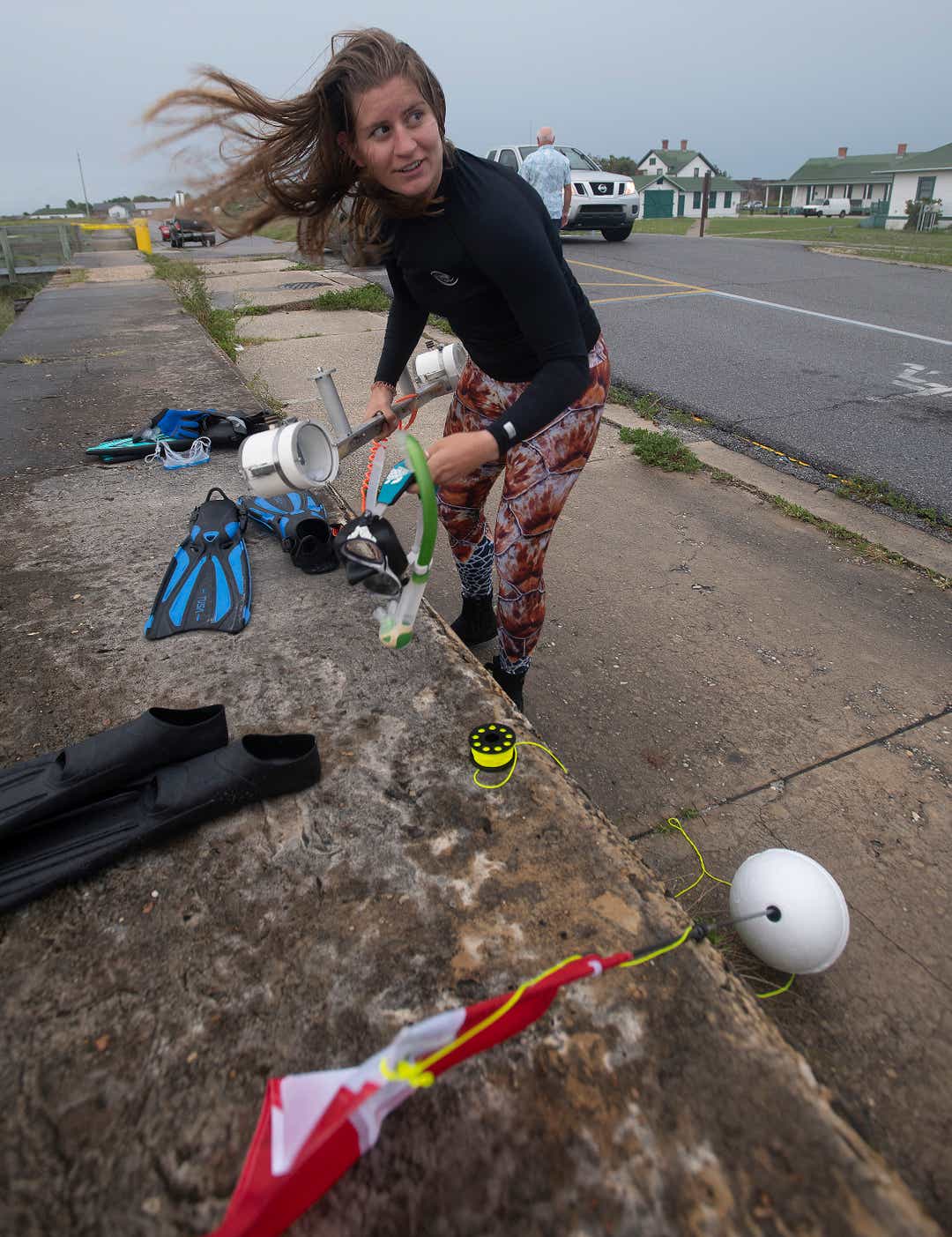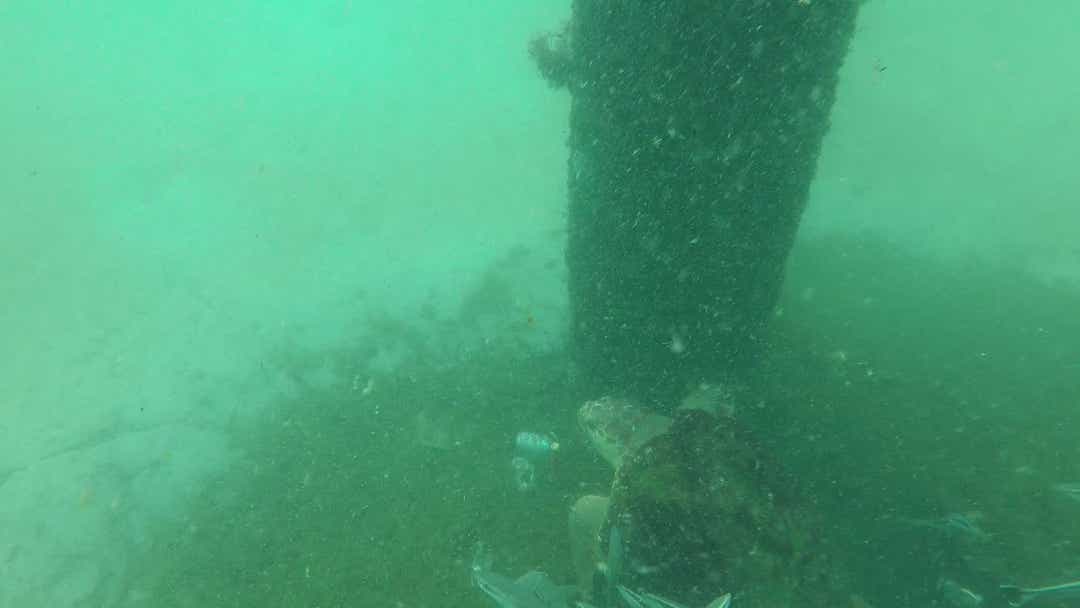A group of researchers from the University of West Florida is using underwater video cameras to study why so many sea turtles are hooked by fishing lines on piers in the Panhandle.
Fishing piers in the Panhandle tend to have higher rates of sea turtle bycatch, meaning incidental catches by fishermen, than other places in Florida and around the Gulf of Mexico. The research team hopes to understand why that is happening and find solutions to reduce the number.
"My goal isn't to stop recreational fishing on fishing piers. My hope for this is to find ways that fishermen and turtles can find ways to coexist," said Susan Piacenza, assistant professor of biology at UWF.
First hatchlings: Pensacola Beach's first sea turtle hatchlings of the season emerge from nest
More sightings: 'It was a sight to behold:' Manatee sightings around Pensacola Beach getting more common

The study is part of a larger project to more closely examine sea turtles by analyzing short videos of them in the water in environments like artificial reefs and seagrass beds. The team is using underwater cameras that are handheld and require researchers to snorkel in the water to get footage, allowing them to measure things like the body length of the sea turtle and the seaweed composition.
"If we see something, we can dive down, make sure the animal's in view of the cameras and then we'll just take (the cameras) back," Piacenza said.
Piacenza and her team of students have not yet gotten approval to survey the Pensacola Beach Pier, but they are working at piers on Navarre Beach, Fort Pickens and Okaloosa, with the goal of surveying each one three times. The group completed its first survey of Fort Pickens last week.
The team will look at a number of things, including the size of the sea turtles to determine at which stage they are at developmentally when they're around the pier, as well as what in the environment around the pier might be attracting sea turtles.
Piacenza said it could be anything from the design structure itself to the seaweed growing on its pilings.
Piacenza said they're also using GIS to study how far the piers are to seagrass beds and mouths of bays.
Then they'll put all of the information into a statistical model to see if there are any patterns that predict why one pier might see a higher rate of hooked sea turtles than another.
"There just really isn't that many studies of sea turtles focusing on artificial habitat. A lot of the work is done in more traditional habitat where you would see them, seagrass beds," Piacenza said. "And just in general, studying sea turtles in water is really hard to do. There's relatively low encounter rates with them."

Cathy Holmes is founder of the Navarre Beach Sea Turtle Conservation Center, which responds to hooked sea turtles on the Navarre Beach Fishing Pier. She said her organization can go anywhere from not receiving any calls per day to several days with up to five calls a day for hooked sea turtles.
Just Monday morning, the organization released four sea turtles after they were hooked and rehabilitated. For sea turtles like those, they could snap the line and get entangled in it.
"That definitely increases their chances of entanglement, either around their flippers where they can't move or around another object," Holmes said. "And any turtle that's hooked in the mouth or close to the eye, a turtle that's actually taken the bait, that can be very dangerous for them."
New reef: New snorkeling reef at Casino Beach finished, wildlife already appearing
Generally, if someone hooks a sea turtle, they should call the phone number listed on the pier for sea turtle rescue, give it slack in the line and not fight the turtle like someone would a fish because it can cause further injury.
The pier project is part of undergraduate Jackson Reimer's thesis, so the team, which includes graduate student Chris Noren, is hoping to finish data collection by the end of the year. Piacenza said she hopes to continue the study in the future so there can be a better understanding of whether the numbers change annually.
Solutions for the problem may be somewhat simple, Piacenza said. Based on preliminary data, the team is seeing more sea turtles around the middle of the piers rather than on the end.
"Perhaps just where the fishermen are distributed on the pier (could help). If it's like Navarre Beach, where there happens to be a lot of bycatch, maybe that's something that they would really want to try to discourage (is) fishermen fishing from a certain part of the pier," Piacenza said.
Something in the data could also show a link between the pier's proximity to snorkel reefs or seagrass beds that could guide any new construction in the future.
"I don't know that to be true yet but something like that could come out and that might help guide other types of activities that we're doing in the water, like thinking about where we're going to put artificial reefs relative to things like fishing piers," Piacenza said.
Madison Arnold can be reached at marnold@pnj.com and 850-435-8522.
tinyurlis.gdu.nuclck.ruulvis.netshrtco.de
مقالات مشابه
- شرکت صادرات و واردات کالاهای مختلف از جمله کاشی و سرامیک و ارائه دهنده خدمات ترانزیت و بارگیری دریایی و ریلی و ترخیص کالا برای کشورهای مختلف از جمله روسیه و کشورهای حوزه cis و سایر نقاط جهان - بازرگانی علی قانعی
- اسباب بازی بدون رانندگی خودت دیوانه
- فصل تابستان ملزومات: یک لیست پخش
- اتحادیه در جنگ داخلی آمریکا
- کروناویروس در فلوریدا: آنچه شما باید بدانید, جمعه, مارس 15
- چگونه اسباب بازی من را به یک فروشنده بهتر تبدیل کرد
- خواص عسل طبیعی و ۱۴ فایده درمانی آن - Www.oipf.ir
- بیانیه پلیس لس آنجلس با استفاده از جکی رابینسون ورزشگاه
- چگونه محصول خود را فراری لباس زیبای خفته بسازیم
- خرید لباس مرد عنکبوتی